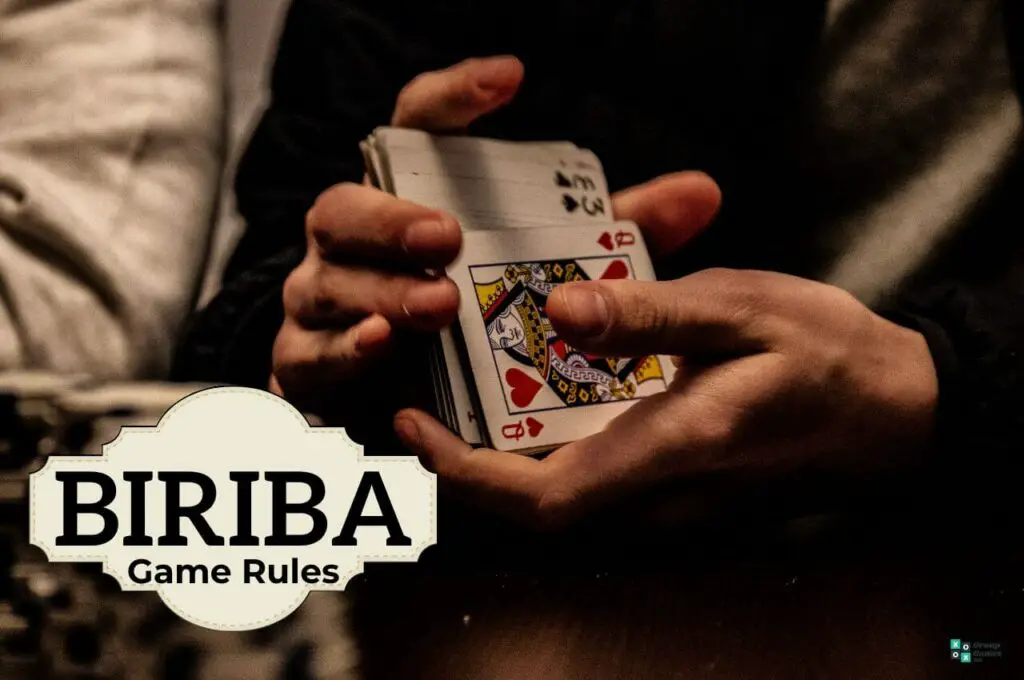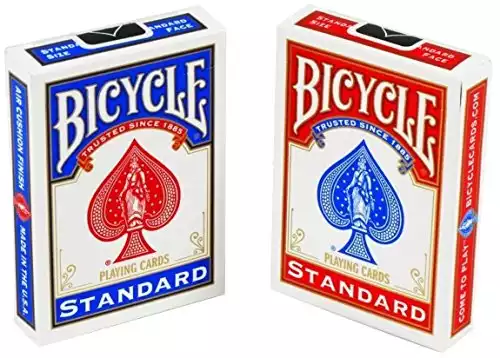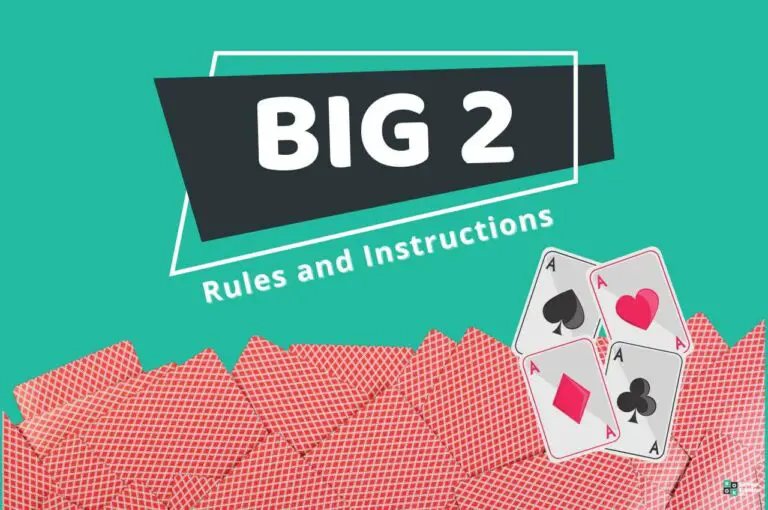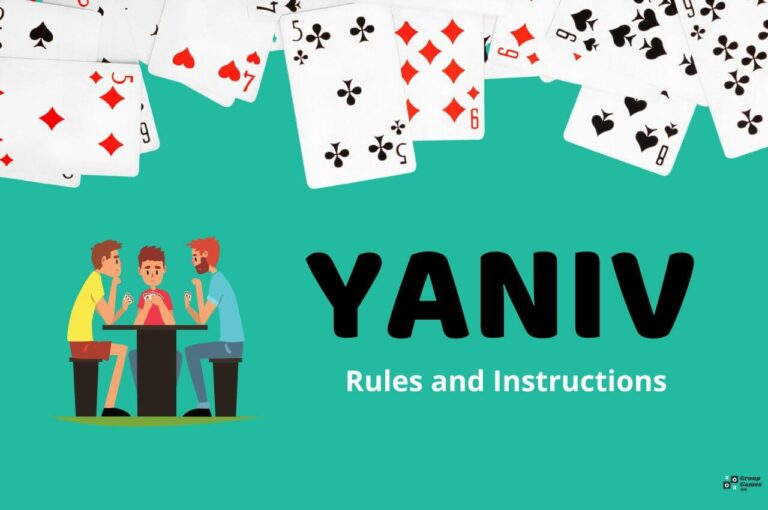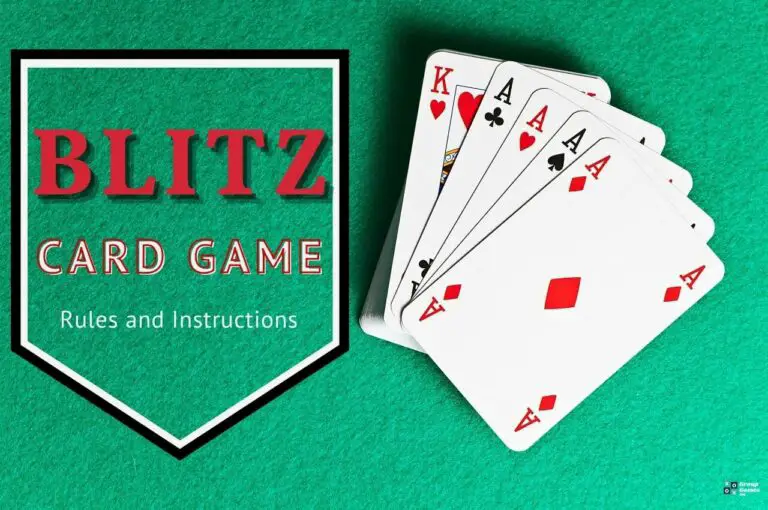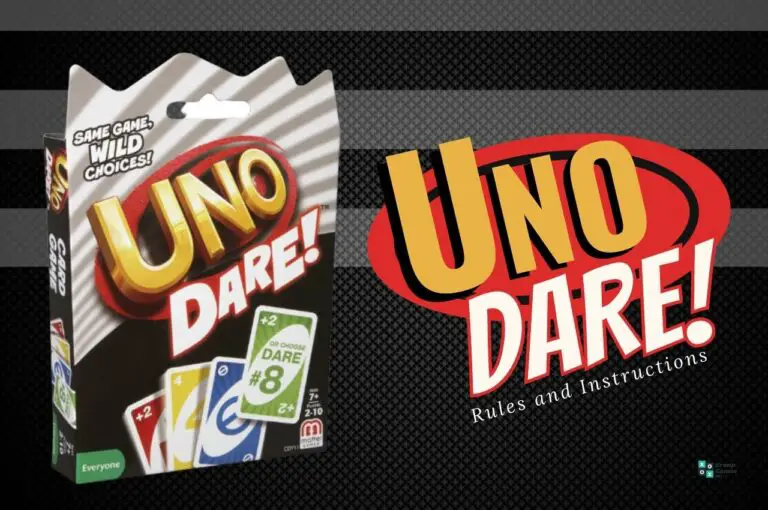If you like to play challenging and complex card games, Biriba can become your new favorite. Learn how to play it with my Biriba game rules and instructions.
Greece is one of my favorite holiday destinations, so when I first heard about the Greek national card game Biriba, I knew I had to learn how it’s played as soon as possible.
The game has many variations: for two players, three players, five players, six players, individuals, and teams. In all of them, players aim to meld cards and gather points.
Biriba belongs to the rummy family, and it somewhat reminds me of Canasta (see Canasta rules) and Hand Knee and Foot card game with its complexity.
Before you learn how to play Biriba, you should know that it is quite a complicated game and requires lots of free time. Still, I believe it’s worth the effort.
This Biriba card game rules guide will cover the following:
- What is Biriba?
- What you’ll need to play Biriba
- Biriba card game rules
- How to play Biriba (video tutorial)
- FAQs
- Other similar games to Biriba (our guides)
Read on to learn how to play Biriba turn by turn with my detailed instructions.
What is Biriba?
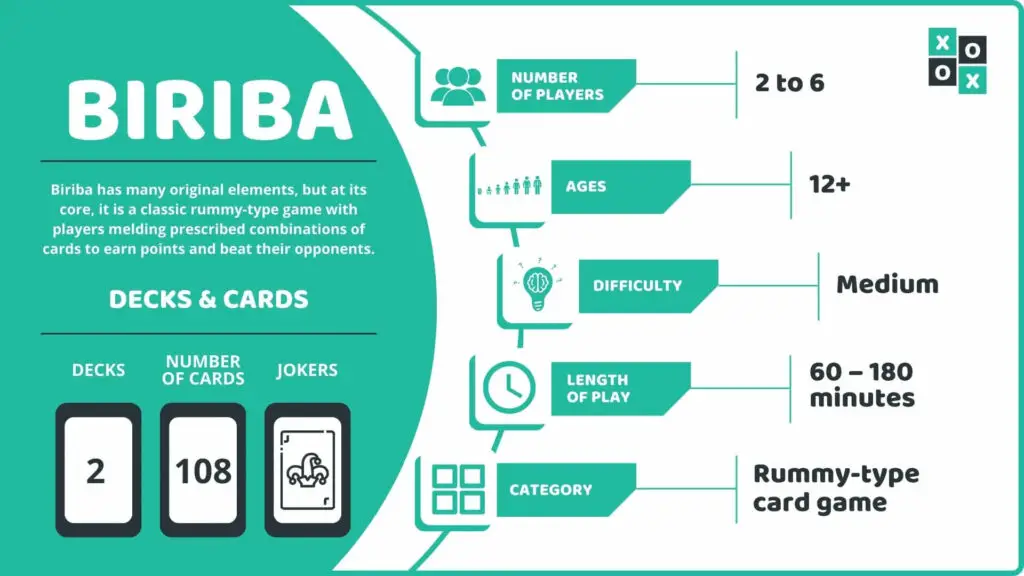
Biriba has many original elements, but at its core, it is a classic rummy-type game with players melding prescribed combinations of cards to earn points and beat their opponents.
Number of Players: 2 to 6 players (different versions allow different numbers of players)
Ages: 12+
Difficulty: Medium
Length of Play: 60 – 180 minutes
Category: Rummy-type card melding game
Similar to: Canasta, Burraco, Pinnacola, Hand Knee and Foot
Main Objective: Score points by melding cards in matching runs and sets.
Why We Love It: If you find all the rummy games too similar and straightforward, Biriba will test your skills with its complex rules and lengthy gameplay.
What You’ll Need to Play Biriba
Playing Biriba requires two identical 52-card decks plus four Joker cards (108 cards total).
Biriba Card Game Rules and Gameplay
As I’ve already explained, Biriba can be played in numerous variations depending on how many players play and whether they prefer to play individually or in teams.
My guide will focus on the four-player game with two competing teams.
Starting the Game
The players sit opposite their teammates and take turns in a counterclockwise direction. Pick a player who will act as a dealer (the role will pass to the next player to the right in the next game).
The dealer shuffles the cards, and the player to their left cuts the deck. The dealer then deals eleven cards to each player in a counterclockwise direction, one at a time.
The player who cut the deck a while ago now prepares two more sets of eleven cards from the deck, places them on the side facing down and lays one across the other.
These are known as “biribaki.”
The rest of the pile is a classic draw pile used by the players to replenish their hands during the gameplay. Flip the top card of the draw pile and place it on the side as the discard pile.
Its suit will serve as a kind of bonus suit for the next round, scoring more points.
Before I explain how Biriba is played, let’s discuss some other important aspects and specifics of this game.
Biriba Melds
In Biriba, players aim to earn points by melding sets of equally ranked cards and runs of consecutive cards of the same suit.
When a player has the combination of the required cards, they can meld it by laying the cards face up on the table in columns with cards partially covering each other.
Each team has its separate melding area, and the melded cards remain there for the rest of the game.
Players can also add more cards to their melds as the game proceeds. They cannot, however, add cards to their opponent’s melds.
So, what combinations of cards can you meld in this game?
- A set: Three or more cards of the same rank (e.g., three Fives). A set can also contain duplicate cards (identical cards from two decks). The maximum number of natural cards in the set is hence eight.
- A run: Three or more cards of consecutive order and the same suit (e.g., Five, Six, and Seven of clubs). Aces can be both below Two and above King for this purpose – but never both at the same time (you cannot create a loop from, say, Queen to Two).
Once you have melded a card as a part of a particular set or run, you are not allowed to move it or take it back to your hand.
When a run/set contains seven or more cards, it is called a “Biriba.” “Biribas” earn players extra points, but they are also necessary for a player to “go out” when the round ends.
A Biriba can be clean (no wild cards), dirty (wild card is included), or full (a run containing a maximum of 13 cards).
Biribas are marked with a bottom card turned sideways.
Wild Cards
In Biriba, players can use both Jokers and Twos as their “wild cards” – replacements for any other cards needed to put together a legitimate set or run.
Note that Twos do not lose their natural role – you can still use them as Twos in runs or sets or opt for them as wild cards instead.
Any set and run can only contain a single wild card at any time.
Unlike natural cards, wild cards can be moved once melded, but only within the same run (e.g., if the Joker represented Three, replace it with a natural Three and use it as Four).
The wild card, however, cannot be replaced with another wild card (not even Two with a Joker!).
How to Play Biriba
Now let’s move to the step-by-step instructions on how to play Biriba. The player sitting to the dealer’s right starts first, and this is how they proceed:
- First, the player must choose to draw one card from the draw pile OR take the entire discard pile to their hand. They can check the content of the discard pile at any time.
- Now the player can (it is optional) meld any number of cards matching the melds rules ( above). They can either form new melds or expand their team’s older melds.
- Players must always discard one of their cards to end their turns by placing it face-up on the discard pile.
- Note that this can’t be the same card a player picked from the discard pile at the beginning of the turn! They can, however, discard a card drawn from the draw pile.
- Now the next player to the right takes a turn.
The players should always end their turns with at least two cards in hand: One to discard to close their turn and one to continue playing. There are some exceptions, though:
- If the player’s team has at least one biriba, but they have not yet taken a biribaki (I’ll explain this shortly).
In this case, the player can play their last card in a meld and take a biribaki or discard their last card in step 3 of their turn and then collect a biribaki.
- If the team has already collected their biribaki, the player may keep their last card to discard it as they go out of the round and end the play.
Taking a biribaki
Now let me explain what the biribakis – two extra sets of 11 cards left on the side at the beginning of the game – serve for in the game of Biriba:
- When the team creates at least one biriba, the first one of its players to get rid of their final card (by melding on discarding) can pick the top biriba as their new hand.
- If this happened when the player melded their last card, they could go on with melding more cards and finish their turn standardly by discarding.
- If this happens at the end of the turn (when the player has discarded their last card), they must wait for the next turn when they can meld more cards.
When a team takes the first biribaki, the second one automatically belongs to their opponents.
If the opposing team already has at least one biriba, one of their players can take the second biribaki immediately after melding or discarding their last card.
The game continues with biribakis following the same rules as before.
End of the game
Biriba can end in two different ways:
- Most commonly, the game ends when one of the players “goes out” (discards their last card after their team has already taken biribaki). In this context, getting rid of their last card by melding is not allowed. The player must save their last card for discarding. Then the game ends immediately.
- Sometimes, the game can end sooner. It’s when the draw pile runs out, and none of the players wishes to take the discard pile instead of drawing a card from the stock.
If everyone chooses to skip their turn instead of collecting the discard pile, the game ends with no winner or loser.
Biriba Scoring
When the play ends, the teams score positive points for their melded cards and negative points for the cards left in the hands of their players. Use the following score chart:
- 3, 4, 5, 6, 7 = 5 points
- 2, 8, 9, 10, J, Q, K = 10 points
- Ace = 15 points
- Joker = 20 points
In addition, take the following bonus points and penalties into account:
- The team of the player who ended the play by going out scores +100 points.
- The team that did not collect biribaki incurs a penalty of -100 points. Their biribaki’s cards do not count towards or against their score.
- If a player takes the team’s biribaki towards the end of their turn and the play ends before they take their next turn, the team incurs a penalty -100-points. Their unplayed biribaki cards, however, do not count against their score.
The following bonus points are scored for all melded biribas:
- Plain suit run of 7-12 cards: clean = 200 points/dirty = 100 points
- Equal cards in a set of 7 and more = 300 points/dirty = 150 points
- Bonus suit run of 7-12 cards: clean = 400 points/dirty = 200 points
- Plain suit full biriba (13 cards): clean = 1000 points/dirty = 500 points
- Bonus suit full biriba (13 cards): clean = 2000 points/dirty = 1000 points
Continue playing the game (with new rounds/deals) until one of the teams collects more than 5000 points. This team wins the game.
How to Play Biriba – Video Tutorial
(coming soon)
Biriba Frequently Asked Questions
What if Biriba ends with a tie?
If both teams collect more than 5000 points simultaneously, the one with the higher score wins the game. If their scores are identical, deal one more hand to break the tie.
Is Biriba related to the Italian game of Biribara?
Although the names seem to be related, the games are very different. While the Greek Biriba is a card game belonging to the rummy family, Italian Biribara is related to roulette.
Is Biriba suitable for kids?
Younger kids will most likely find the game of Biriba too complicated and too long to keep them entertained. You can try the game with older kids and teens, though.
Other Similar Games to Biriba (Our Guides)
Looking for some exciting Biriba alternatives? Check out our guides to more popular card games for intermediate players below:
- Canasta rules
- Hand Knee and Foot rules
- Conquian rules
- Tonk rules
- Scopa rules
- Kemps card game rules
- Sheepshead rules
- Big 2 rules
- Liverpool rummy
- Buraco (guide coming soon)
- Pinnacola (guide coming soon)

